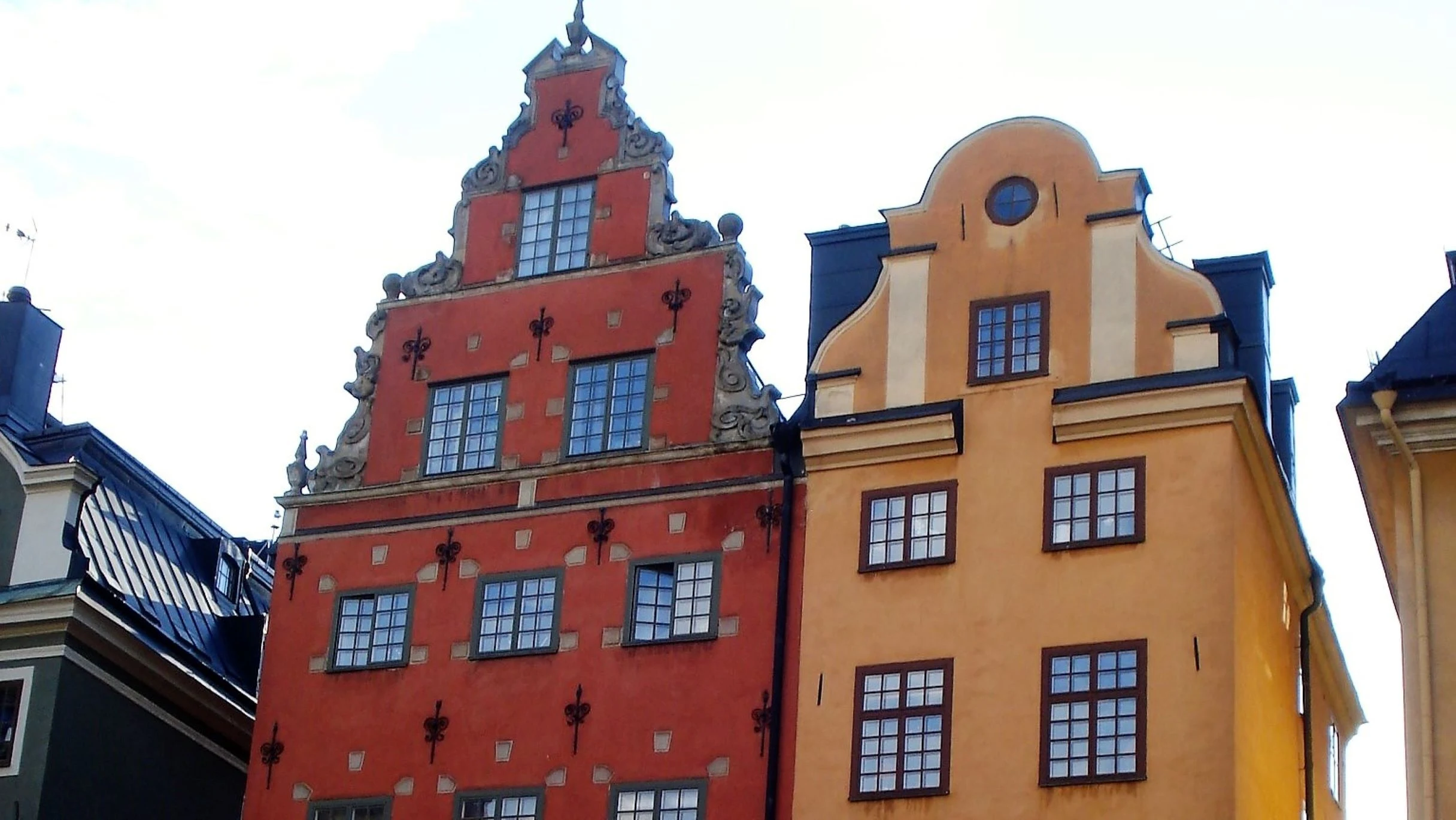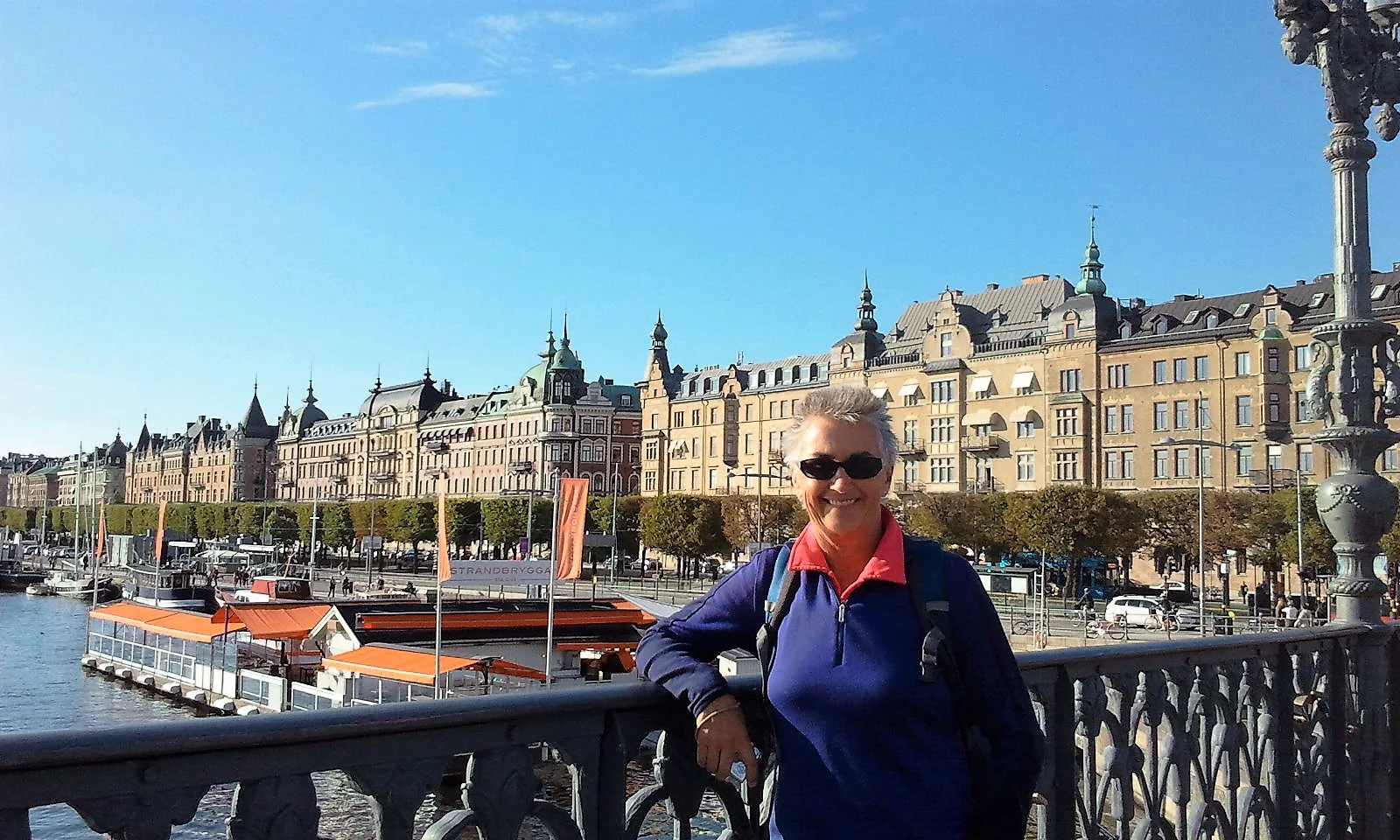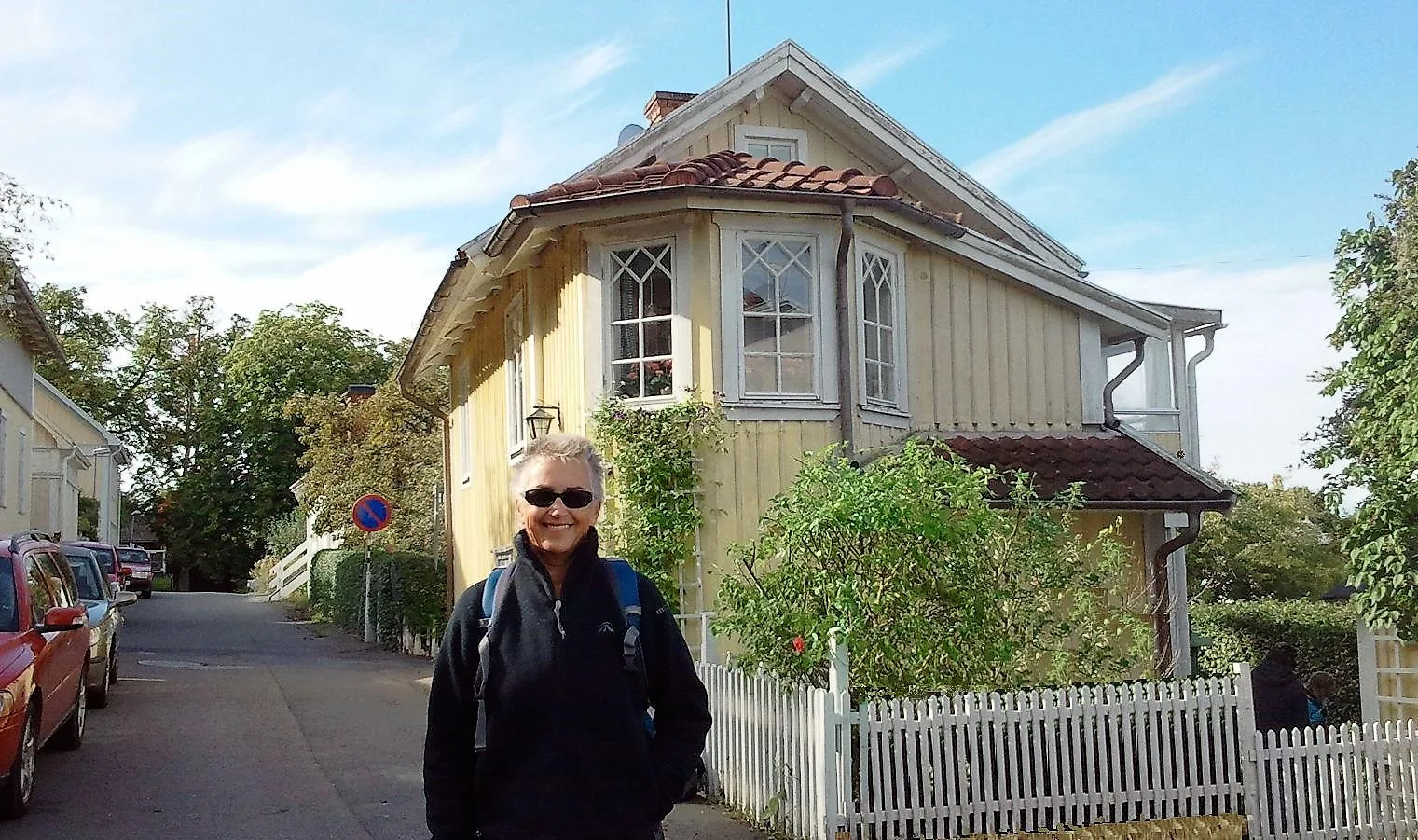We are on a 6-month drive around northern and eastern Europe in our motorhome called Vanni. Our last stop was in Copenhagen the capital of Denmark, then we drove over the Øresund Bridge to cross into Sweden. The drive was 8 km of bridge and 4 km of tunnel, with a bit of an island in the middle. Overall, about 15.9 interesting kilometres.
 |
| Driving across the Øresund Bridge from Denmark to Sweden |
The bridge is built over and under the Øresund Strait as a combined motorway-railway bridge and tunnel, and is the longest of its type if Europe. It is a cable-stay bridge with two pairs of towers that support the bridge cables. The towers soar an impressive 204 metres 669 ft) above the bridge.
After paying a horrendously expensive toll for the privilege of taking this short but spectacular trip, we arrived in the Swedish city of Malmö, that dates back to 1275.
We found Vanni-sized parking and had a lovely wander around seeing Malmö’s historic town hall and fountain, Malmöhus Castle which dates back to 1434 and is the oldest surviving renaissance castle in Scandinavia, and the tall St Peter’s Church, as well as other historic and modern-looking buildings.
We also spotted a giant parking place with hundreds of bicycles parked there. We wondered how the owners identified their bike from the hundreds of others! We learned that Malmö is one of Sweden’s largest cities and is known as one of the most cycling-friendly cities in the world.
Leaving Malmö, we drove north-east to Växjö, a nice clean and tidy town on a lovely lake. We noticed that many of the houses around there were painted a deep red colour. Called Falu Red, it is based on a copper by-product from Sweden’s mines in Falun, that when added to paint, makes it red, very durable and therefore popular.
Moving on, we arrived in Jönköping, a pretty city on Lake Vättern, Sweden's second largest lake. It has lots of modern apartment blocks along part of the lake, and an old town centre which looked nice. We thought we might overnight there, but the camping ground was closed so we didn’t stop.
Following the shores of Lake Vättern, we reached the small town of Gränna. We parked and had a quick walk about and it seemed a lovely little town. But we needed to find a camp to overnight in, so we returned to Vanni and searched, and soon spotted a sign that led us to a camping ground.
However, it was also closed. But luckily, there was a stellplatz right beside it (a stellplatz is coin-in-the-slot overnight parking place for campervans). Marg cleverly figured out the Swedish instructions, and the gate opened so we managed to get in and settle down for the night.
 |
| Marg outside a polkagris candy shop in Gränna, Sweden |
The next morning, we wandered around the very quaint little village of Gränna which is famous for its polkagris (candy) shops. In fact, there were so many polkagris shops that we wondered how they all survived.
We watched a demonstration of how polkagris is made, and while we found this interesting, we resisted the urge to buy something with so much sugar in it. But we did buy a lovely lunch at the local café - and experienced just how expensive it is to buy things in Sweden!
After lunch, we climbed numerous steps up to a free open-air ethnographic museum at the top of a hill. It was very interesting and quite lovely. There were also great views of the lake and autumn-coloured trees. Back near the stellplatz later, we walked along the pretty lake-front, but then it started to rain.
So, even though it was late afternoon, we decided to move on to Stockholm, the capital of Sweden and its largest city with over 900,000 people. The rain was getting heavier, so we drove straight there on the motorway, found a campsite, and snuggled in prepared for a cold, wet night.
The next few days were also wet, so we chilled out in Vanni. When the weather cleared, we caught the metro into Stockholm city, then made our way on foot to Gamla Stan, Stockholm’s old town. It is awash with beautiful coloured houses, narrow cobbled streets, and heaps of atmosphere.
As we zig-zagged through the streets, we noticed how narrow they were. There were small lanes running off small streets and the whole area was very quaint. We stopped for a photo of Leigh in Mårten Trotzigs gränd, Stockholm's narrowest street which tapers down to 90 centimetres (35 in).
 |
| Historic merchant houses on the Stortorget in Stockholm, Sweden |
We soon found the centre of Gamla Stan, called the Stortorget. It is a very scenic area surrounded by colourful old merchants' houses, the 18th century Noble Museum which is about the Nobel Prize, many cafes and restaurants, and a large and historic water pump called the Stortorgsbrunnen.
Nearby, we saw other buildings that overflow with history and character, such as the Stockholm Stock Exchange Building, the House of Nobility which is a palace for the nobles of Sweden built in 1660, and the Storkyrkan (Stockholm Cathedral), which is the oldest church in Stockholm dating back to 1306.
Across a small channel from Gamla Stan, was Riddarholman Island where we visited the Riddarholmen church, the resting place of Swedish Monarchs. We also visited the Tower of Birger Jarl, who was the founder of Stockholm, and saw several private palaces dating back to the 17th century.
Leaving that area, we wandered further afield, visiting the Royal Dramatic Theatre, Parliament House, City Hall, and several museums.
Much later, we stopped at Kungliga Slottet, Sweden's Royal Palace, built in the 18th century and home of the Swedish Royal family. We found that the changing of the guard was the next day at 12 noon, so planned to re-visit to see it. Then we found our way back to the metro and headed back to camp.
The next day we returned to see the changing of the guard. While interesting, it was also a bit long and we were standing for ages in the shade with a cold wind blowing. To warm up, we found a quaint restaurant and had a nice traditional meal. Leigh had meatballs and Marg had fried herring - both very tasty.
 |
| Marg on the bridge to Strandvägen, Stockholm, Sweden |
Stockholm is bound by the Baltic Sea and Lake Mälaren, and sits on a series of 14 islands connected by 57 bridges. We walked across several bridges to our various sightseeing destinations, but one took us to Strandvägen, a waterside promenade lined with grand buildings, and a huge range of boats (many of them quite old).
The elegant buildings mostly date back to the early 19th century, and were built as private mansions for wealthy business people. Today, they are still owned by the elite of Stockholm and offer some of the city’s most exclusive real estate and most prestigious addresses.
The following day, we were in the city again and made a bee-line for the new ABBA Museum, where we had huge fun. There were heaps of interactive displays and lots of information about the ABBA group. You could dance, sing, and answer quizzes and download your results.
We watched “ABBA The Movie” which was about their Australian tour, and had a quiet giggle at the Aussie accents! Days later we were still humming ABBA tunes. We also visited many other places, including the Army Museum, and the Viking Museum. After a long walk seeing more of the city, we headed back to camp.
A few days later, we went to see the Globe (Globen) Arena which is the world's largest spherical building. It has a round elevator that travels up the outside of the sphere to the top then over and down the other side. We were going to ride it but it was hugely expensive, so watched from the outside.
There was a shopping centre nearby and we found a GATT shop - same name as Leigh’s! Apparently, the GATT brand is big in Sweden. Leigh asked about the owner’s name, finding that they had an American background. We then headed back to camp, quite satisfied that we had seen a huge range of sights in Stockholm.
We drove west the next day, and our drive took us through some lovely villages such as Mariefred which is on a lake and has a stunning fortress. We found a parking spot right by the lake and went for a walk. The village was lovely and after a look around, we returned to Vanni for lunch, then headed off.
Still driving west, we were stopped by Police just outside the town of Kungsör. Not seeing a reason for this, we asked the Police why we were stopped and were told that the local quarry was setting off explosives close by. Ten minutes and two loud booms later, we were off again.
 |
| The square in Arboga village, Sweden |
Half an hour after that, we arrived into the medieval village of Arboga. Its claim to fame is that it is one of Sweden’s oldest towns and also the scene of Sweden’s first parliament in 1435. It had several lovely old wooden buildings and a church housing some beautiful historic frescoes.
We had a walk around admiring this quaint town, then moved on. It was a very picturesque drive around this area, as passed more red-painted houses.
Later, we arrived in the mid-sized town of Örebro where we spotted an amazing fortress. We wanted to take a closer look but couldn’t find parking big enough for Vanni. After driving around the town twice and seeing some other lovely old buildings and pedestrian streets, we decided to move on.
Our next stop was in the town of Karlstad. This town lies on the northern shores of Lake Vänern, the largest lake in Sweden and in the European Union.
We checked out Karlstad, seeing it’s the Klarälven River, the longest in Sweden, and the historic Carlarnas sluss (lock) across the river. We also liked its famous and large city square, one of the largest in Sweden, the town hall, the white Cathedral, the interesting railway station, and the Värmland Museum.
Karlstad was a nice-looking city with many lovely parks and areas of natural beauty. We liked it so found a campsite there for a couple of nights. Because it was late in the season there were very few people at the camp, so it was nice and quiet - except for a lone noisy woodpecker in the neighbouring tree!
We had a beautiful parking position, right on the edge of Lake Vänern. But the temperatures were getting cooler at about 10 o during the day and 2 o at night...brrr! We are beginning to wear wearing more layers to keep warm, as we think about moving on to Oslo in Norway. But you can read about that in the next blog.
This blog describes part of our 6-month motorhome trip around north-eastern Europe, which began in Prague.












